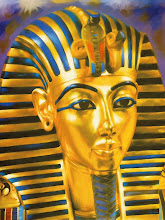Info On The Book:
Apocalypse Culture II is a book edited by Adam Parfrey
and published by Feral
House in 2000 (ISBN 0-922915-57-1).
A sequel to his previous work, Apocalypse Culture, it continues the probing of
societal taboos, with
special attention given to child pornography,
cannibalism, terrorism,
assorted paraphilia, scatological
research, abnormal racisms, misanthropic ecology, and mind control.
Parfrey clarifies, in the preface, that the collection is not a "manifesto or
a smorgasbord
of personal fetishes or beliefs." "The book was compiled
to examine far-reaching and extreme societal tendrils."
It is dedicated to "the memory of Vladimir Jabotinsky 1880-1940." It opens with
quotations from Wilhelm Stekel's Sadism and Masochism and Woodrow Parfrey's
(the editor's father, imdb entry) death scene as a mass murderer
in the Naked City episode, "Burst of Passion".
Unable to find a printer willing to risk prosecution (under the Child Pornography Prevention Act), the book was
published with certain illustrations censored. The obscene parts of artwork by Blalla Hallman, Stu Mead, and
Beth
Love were blacked out, albeit in an incomplete manner. Feral House
made the objectionable paintings available for viewing on their website.
Contents
Clonejesus.com
|
|||
Human Pigs
|
|||
The Strange Crime of Issei Sagawa
|
|||
Bottom Feeder
|
Anti-abortion
comic pamphlet
|
||
From Cradle to Ladle
|
|||
For Fear of Little Men
|
|||
The Son of a New Morality Which Drowned Many in Her Wake
|
Giusva
Fioravanti, founder of the Nuclei Armati Rivoluzionari
|
||
Bacteriological Warfare
|
|||
The Conspiracy Virus, and How Mass Media Tries to Prevent It
|
|||
Techniques for Truth Suppression
|
|||
The Scapegoat: Ted Kaczynski, Ritual Murder, and The Invocation of
Catastrophe
|
The cryptocracy's framing of Ted Kaczynski
|
||
America, The Possessed Corpse
|
|||
The Jonestown Re-enactment
|
|||
Murder Lite
|
|||
Joe alt.true.crime
|
FAQ about murder lover JOE, his postings on the true crime newsgroup, plus his letter to Danny Rolling
|
||
Danny Rolling's Letter
|
|||
I Am The Hate
|
|||
Roadkill
|
Firsthand account of the author's assault of his girlfriend
|
||
Hatred and Anger
|
|||
Dear Satan,
|
Letters sent to Anton LaVey and the Church of Satan
|
||
| The Pornography of Romance |
|||
John Hinckley's Letters and Poems
|
Letters to Jodie Foster
|
||
Uncle Ronnie's Sex Slaves
|
|||
Ritual Abuse
|
List of symptoms and syndromes regarding Satanic ritual abuse
|
||
Ceto's New Friends
|
|||
The Private Zone
|
Excerpts from a 1982 child sexual assault prevention book
|
||
Pedophilia and the Morally Righteous
|
|||
Prime Time
|
|||
The Late, Great Aesthetic Taboos
|
|||
The Color Section
|
The poster for Crispin Hellion Glover's What
is it?, paintings by Blalla
W. Hallman, Stu Mead, Danny Rolling, and Norbert
Cox
|
||
Inaugurator of the Pleasure Dome: Bobby Beausoleil
|
|||
My Lips Pressed Against the Decay
|
|||
The Ketamine Necromance
|
|||
RealDoll
|
|||
Who Is the Most Masterful Seducer of Them All?
|
|||
Steps In Overcoming Masturbation
|
|||
The New Hermaphrodite
|
|||
Total Body Transplants
|
|||
Death By Installments
|
|||
The Syrup of Memory
|
|||
Hi-Tech Market Research
|
|||
Project Blue Beam: The Electronic Second Coming
|
|||
Bye Bye Miss American Pie As Sung By Aryan Nations
|
|||
Holding Onto Jesus' Feet
|
|||
Jesus/Lucifer Santa/Satan? The Apocalyptic Parables Of Norbert
H. Kox
|
|||
The Bleeder
|
|||
David and Hitler go to the planet Mars
|
David
|
Semi-Retardation
|
|
What Is It?
|
|||
Never Again!
|
|||
Jews For Hitler
|
|||
Were Whites Made by Yacub through Selective
Breeding?
|
Dr. S. Epps
|
Elijah Muhammad, the White race, melanin
|
|
The War of the Balls excerpted from The
Isis Papers
|
|||
Kill and Kill Again
|
|||
Brown Magic
|
|||
The Fecal Sorcerer
|
|||
Edible Reward for Dry Pants
|
|||
The Shit List
|
Jack's Number Two
|
||
Dystopia
|
|||
Mr. Awesome Proves Everybody Is A Star
|
|||
The Vampire Manifesto
|
|||
Humanflood
|
Pentti Linkola / Introduction by Michael Moynihan
|
||
Ship of Fools
|
Source: Unknown or Deleted
More Info:
Amazon
feralhouse
Wikipedia


.bmp)




+001.jpg)
+001.jpg)
+001.jpg)
+001.jpg)
+001.jpg)
+001.jpg)
+001.jpg)
+001.jpg)
+001.jpg)
+001.jpg)
+001.jpg)
+001.jpg)
+001.jpg)
+001.jpg)
+001.jpg)
+001.jpg)
+001.jpg)
.bmp)
+001.jpg)
+001.jpg)
+001.jpg)
+001.jpg)

+001.jpg)
+001.jpg)
+001.jpg)
+001.jpg)

+001.jpg)
+001.jpg)
+001.jpg)
+001.jpg)
.jpg)
.jpg)










+001.jpg)

+001.jpg)
+001.jpg)


+001.jpg)




+001.jpg)





+001.jpg)


+001.jpg)

+001.jpg)

+001.jpg)
.jpg)


